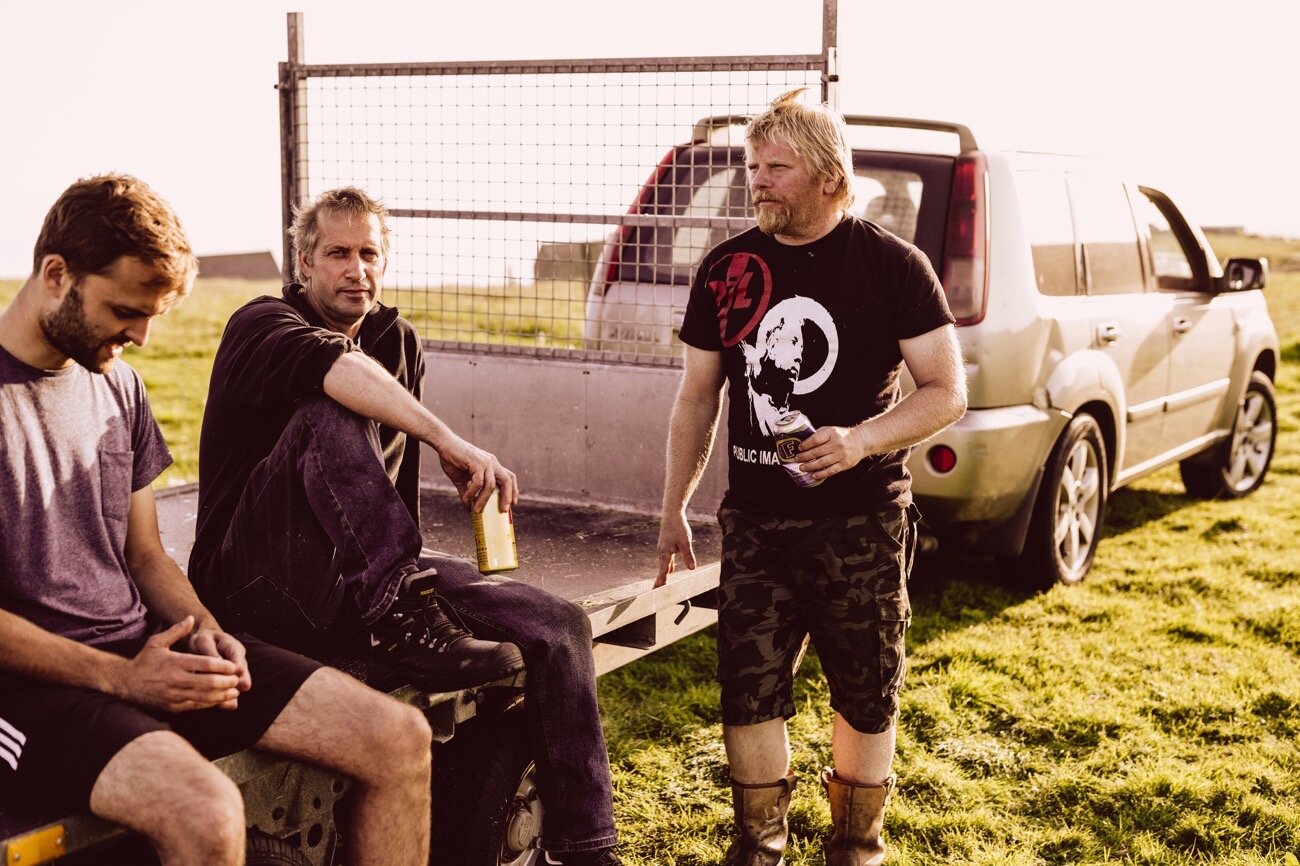
Fair Isle -
Far Out,Yet Still So Close
What’s life like on the most remote inhabited island of the United Kingdom?
Florian Sturm (words) and Xiomara Bender (photography) went there to find out.
Fair Isle is a unique and magical place. And, at the same time, it's not. Life there cannot be compared to what we, in the rest of the world, are used to. Yet, if you get to spend some time on this tiny patch of land, you'll realise that, in some unexpected way, it’s not that different to modern day-to-day business in a rural community at all. But what will certainly strike you, once you set foot on Britain’s most remote inhabited island, is a subtle and warm feeling of: I’ve found it.
Fair Isle, officially part of Scotland and located halfway between Orkney and Shetland, is home to 55 permanent residents. It once had 360. But those peak times were back in 1861. Since then, the population of Fair Isle has seen an almost continuous decline. In 1973, when the head count was only at 42, chances were that the remaining people had to leave as well. After all, running an island is a hell of a job. And one that needs many hands.
















Someone has to look after the water scheme, the electricity system and the roads. The shop, ferry, airstrip and school need staff, the Fair Isle Bird Observatory is doing a census of migrating and sea birds all year round. There's a nurse, a building company, various knitters, a weather station, B&Bs and the large majority of properties are crofts which need looking after.
That's why every adult out here holds various jobs at the same time. Not necessarily because they want to, but because some things just need to get done. Fiona Mitchell, 56, for example, runs the local shop and the post office with her husband Robert. She gives art instruction at the primary school and is the Watch Manager for Fair Isle's unit of the Scottish Fire and Rescue Service. On top of that, Fiona's a trained aircraft fire fighter for the licenced aerodrome, works as a community councillor, is member of various boards on the island and, as most women out here, also does some knitting. “For us, no day is the same and there's always something to do”, says Fiona, who was ten years old when she first came to the island. “In fact, one of the biggest misconceptions people have about living on Fair Isle is that they think we must be bored in the evenings or especially in winter.”
Truth be told, boredom is a concept which does not exist in the lives of the islanders. Even though, no – precisely because of the fact that Fair Isle is so remote. Almost everything here must be built, repaired, serviced and maintained by the locals themselves. Once you live here, you (have to) become a problem-solver and acquire new skills. After all, getting outside help and materials is not only expensive, it just might not arrive. The phrase ‘weather permitting’ is one you will hear a lot whilst being on Fair Isle. As it is situated right where the Atlantic Ocean, the North Sea and the Norwegian Sea meet, getting on and off the island is highly dependent on the weather.
Generally speaking, you can either catch a tiny plane from Kirkwall (Orkney) or Tingwall (Shetland) and enjoy, at best, a half-hour scenic flight before touching down at what probably qualifies as one of the smallest airports in the Western world. The airstrip can be described as a huge gravel road and the terminal building a little stone house, two small rooms and a toilet, which could certainly do with some refurbishment. In summer, there are fourteen planes scheduled per week. In winter, this number stands at ten. Weather permitting, of course. -See the complete project which is available to license at INSTITUTE